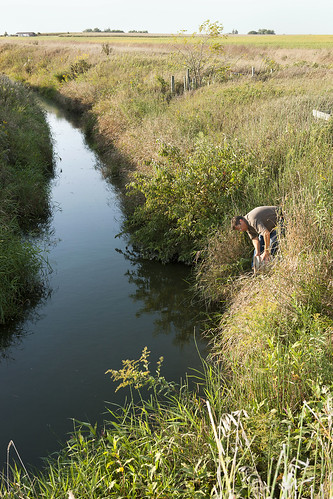
This post is part of the Science Tuesday feature series on the USDA blog. Check back each week as we showcase stories and news from the USDA’s rich science and research portfolio.
There’s no farming without water. Recent droughts in the United States and elsewhere underscore our need to conserve water in agricultural production, and studies have identified agricultural management practices that help protect water quality. USDA’s Agricultural Research Service (ARS) researchers are making key contributions to these efforts.
For instance, ARS scientists use moisture information collected by satellites to develop the Evaporative Stress Index. In 2012, this tool predicted that drought conditions were developing weeks before other drought monitoring networks made the same call. ARS researchers also use satellite data to design methods of estimating rainfall amounts in regions where setting up sampling stations would be a challenge, work that has long-range potential for improving precipitation estimates globally.
Our scientists have improved crop models that farmers can use to manage water more efficiently. One of these models, the Phenology Modular Modeling System decision support tool, has already been downloaded by more than 1,500 researchers, farmers, and agribusinesses. ARS scientists also periodically update another model called the Water Erosion Prediction Project; the latest version includes new methods for estimating the movement of water on top of and through the soil, as well as through subsurface tile drainage, which is common in Midwest crop fields.
Protecting water quality is just as important as tracking how much there is and where it’s going. One ARS scientist developed a method to identify where growers can use different types of surface and below-ground management practices to reduce the movement of agricultural chemicals and improve water quality. Other ARS scientists used field studies and computer models to study the movement of the pesticide atrazine in water bodies next to Puerto Rico’s Jobos Bay National Estuarine Research Reserve, information that can help farmers develop practices to protect estuarine ecosystems from agricultural chemicals.
From the smallest stream to the largest bay, we’re doing everything we can to conserve our precious—and finite—water resources.
